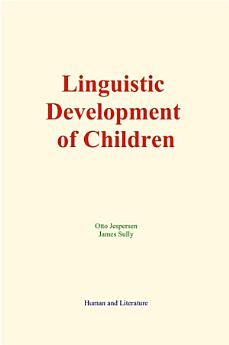Linguistic Development of Children
关于此电子书
A child’s linguistic development covers three periods—the screaming time, the crowing or babbling time, and the talking time. But the last is a long one, and must again be divided into two periods—that of the “little language,” the child’s own language, and that of the common language or language of the community. In the former the child is linguistically an individualist, in the latter he is more and more socialized...
No part of the life of a child appeals to us more powerfully perhaps than the first use of our language. The small person’s first efforts in linguistics win us by a certain graciousness, by the friendly impulse they disclose to get mentally near us, to enter into the full fruition of human intercourse. The difficulties, too, which we manage to lay upon the young learner of our tongue, and the way in which he grapples with these, lend a peculiar interest, half pathetic, half humorous, to this field of infantile activity. To the scientific observer of infancy, moreover, the noting of the stages in the acquisition of speech is of the first importance. Language is sound moulded into definite forms and so made vehicular of ideas; and we may best watch the unfoldings of childish thought by attending to the way in which the word-sculptor takes the plastic sound-material and works it into its picturesque variety of shapes.








